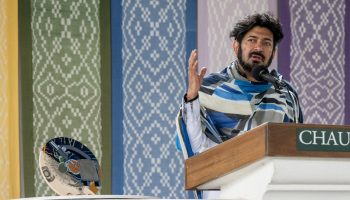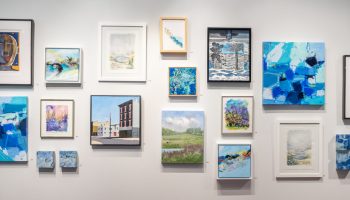Every once in a while, organist and coordinator of worship and sacred music Jared Jacobsen likes to take the Tallman Tracker Organ out of the Hall of Christ and plop it down in the middle of Chautauqua Institution’s gardens.
Well, not literally. But Jacobsen hopes the music of this week’s Tallman Organ Recital will make audience members feel like they are sitting in the middle of a garden.
The recital will be at 12:15 p.m. July 26 in the Hall of Christ. Titled “Organ in a Garden,” the performance will feature pieces that depict the outdoors of Chautauqua through music.
“I found pieces that kind of reflect what you see and experience as you walk around this place with an eye toward what’s growing around the corners,” Jacobsen said.
When Jacobsen was a kid at Chautauqua, he loved to splash and play in the fountains of Bestor Plaza. Chautauqua’s beautiful fountains inspired Jacobsen to play “Fountain Reverie” by Percy Fletcher, which he said “depicts running water as well as anything he knows.” Its quieter stops can be played in an arpeggio figure, or group of notes that repeat over and over again, to create the running water sound.
But the concert will also depict sounds of the animals that surround Chautauqua’s fountains, specifically its squirrels and birds.
“The Squirrel” by Powell Weaver pays homage to the multitude of squirrels Jacobsen is always surprised to see on Chautauqua’s grounds, and “Pastorale and Aviary” by Myron J. Roberts will depict Chautauquans hearing bird sounds as they “meander” around during an afternoon walk.
Jacobsen said the piece is a walking theme that depicts the way people walk at Chautauqua when they don’t have anywhere to be. Weaver uses a different number of notes in each measure to depict someone sporadically stopping.
“All of a sudden it’s, ‘Look! There’s some birds,’ ” Jacobsen said when describing the piece’s sound. “Organs are wonderful to make bird sounds because an organ is a box of whistles, and so the same principle that birds use to make sounds are what we use for organ pipes to make sound.”
The recital’s last two pieces will aim to depict the beauty of the sky over Chautauqua Lake. The name of Harvey B. Gaul’s “La Brume” translates from French to “The Mist” in English. Jacobsen said to him it represents the misty fog that forms over Chautauqua Lake in the early morning, just as the sun is rising.
The recital’s last piece will be “Clair de Lune” by Claude Debussy, which Jacobsen said is to represent the beauty and clarity of a summertime full moon.
“It was written for the piano as an impressionist instrument, which means you use all the tricks you have playing the piano to blur the edges of the sound and to make the cords melt into each other,” Jacobsen said. “You have to do a little bit of negotiating with the organ, which doesn’t have the tools to blur the sound as the piano does, but if you approach it right and you play it quite softly, I’ve discovered you can make a pretty good representation of the clarity of the moon.”






